Lorenzo Lotto, an exhibition in Macerata and the territory brings together his Marche production for the first time
From October 19, 2018 to February 10, 2019, Palazzo Buonaccorsi in Macerata is hosting the exhibition Lorenzo Lotto. The Lure of the Marches, a new exhibition dedicated to the great Venetian painter Lorenzo Lotto (Venice, 1480 - Loreto, 1557) after the one at the Prado in Madrid(here is our review) and the review at the National Gallery in London, which created a sort of totally unexpected “Lotto year.” The exhibition, curated by Enrico Maria Dal Pozzolo, was created with the aim of bringing back to the territory, from various parts of the world, the author’s works made precisely for the lands of the Marche region (where the artist was active for a long time, creating masterpieces that have marked the history of art) putting them in relation with other testimonies capable of illustrating the stages of the Venetian artist’s career.
Thus, the Marche region becomes in autumn-winter 2018 the scene of an exhibition event and collateral niziatives of the highest value (promoted by the Marche Region with the Municipality of Macerata), which will allow the public to rediscover the extraordinary heritage of Lotto, in a region that has no equal in Italy in terms of quantity and quality of works by the artist. And at the same time the public will also be able to grasp the deep bond that united Lorenzo Lotto to these lands, to which he repeatedly returned to create and to inspire himself. The large and unusual exhibition at Palazzo Buonaccorsi, organized by Villaggio Globale International, will bring together for the first time Lotto’s works created for the area and then dispersed around the world or those that, by history and achievement, had strong ties to the Marche region. It is a research exhibition, which in some ways intends to be experimental in its desire to combine exhibition strength, in-depth multimedia supports, great masterpieces but also cues for research and critical discussion .
In fact, the exhibition reveals to the public previously unpublished documentary materials on the artist’s activity and works that have never been exhibited in previous events (among them a Venus adorned with Graces from a private collection, published in 1957 by Pietro Zampetti and remained in the dark for seven decades: it is therefore one of the most striking novelties of the exhibition), but which is necessarily completed in the Marche region, placing itself in close dialogue with the Lottesque works (twenty-five works) scattered in the different centers and deliberately left in the sites to which they belong. The cities of Ancona, Cingoli, Jesi, Loreto, Mogliano, Monte San Giusto, Recanati and Urbino give shape, with Macerata, to a sort of diffuse exhibition to be experienced together with the artistic and natural beauties of the Marche, a region wounded by the last dramatic earthquake that hit Central Italy, but which is tenaciously aiming to enhance its immense heritage.
The exhibition offers in Macerata more than 20 autograph paintings by Lotto and five drawings by his own hand, as well as some extraordinary graphic works by great authors, such as Dürer and Mantegna, from whom Lorenzo drew inspiration. But also on display are precious manuscripts and volumes, globes and ancient maps, to contextualize his activity in these lands. Works by Lotto from international collections (such as the Gemäldegalerie of the Staatliche Museen in Berlin, the British Museum in London, the Louvre in Paris, the Brukenthal National Museum in Sibiu, the Museo del Prado in Madrid or the Musée des Beaux Arts in Strasbourg, as well as from the Poldi Pezzoli Museum in Milan, the Correr Museum in Venice and the Quirinale Collections) will be brought together for the occasion at Palazzo Buonaccorsi in the heart of the Marche town. On display for the first time in Italy are canvases from Berlin featuring St. Christopher and St. Sebastian, two panels from a dispersed polyptych that Lotto had painted for the church in Castelplanio, a small town near Jesi. The works, which the state of Prussia bought between 1819 and 1821 from the English merchant Edward Solly, were restored in 1998 at the Getty Museum, revealing parts hidden by the 19th-century frame and showing an exemplary and meticulous pictorial rendering of the nude body of St. Sebastian, which is very rare in Lotto’s production. Instead, from the Hermitage in St. Petersburg come, exceptionally, two important Marche works by Lotto, including Christ Leading the Apostles to Mount Tabor (1511-1512), predella of the marvelous Recanati Altarpiece that the public can admire in the nearby city of Leopardi, while from the Uffizi Galleries comes to Macerata, exhibited to the public for the first time after an exceptional restoration, the Sacred Conversation signed and dated 1534, the year Lotto was certainly in the Marche. The painting’s beautiful and almost unexpected chromatics, as well as its complex iconographic construction, confirm the greatness of this artist, who knows how to enchant with his “magical vibrations of light”: a melancholic and restless painter, inadequately appreciated during his lifetime, but placed by critics, beginning in the late 19th century, among the giants of 16th-century painting.
Moreover, in the rooms of the eighteenth-century Palazzo Buonaccorsi, Lotto’s “Marche” experience, now recomposed, is also supplemented by a number of “connecting” works, for which the territorial link is not documented but neither excluded, so as to delineate without gaps the artistic evolution of the Venetian painter. Again, references to the many works in the region are suggested by didactics and video contributions specially made by Land Comunicazioni, as well as the documentary directed by Luca Criscenti (also presented in Madrid and London) that closes the Macerata exhibition, inviting visitors to go to villages and hills, always in the footsteps of the great artist. The only exception: the presence in the exhibition of the large fresco detached and mounted on canvas of San Vicenzo Ferrer in Gloria (c. 1510-1512), the only one known to date in the Marche region, and not visible now for some time, due to the inagibility (following the earthquake) of the church of San Domenico in Recanati, where the work was kept, and therefore exposed to the public on this occasion, thanks to the collaboration of the local Diocese.
Again, the review also brings back to the attention of critics and the public a canvas with St. Jerome in the Study formerly well featured in the scholarly literature and then purchased, in the late 1970s, for the Musei Civici of Bassano del Grappa: a work that was later, however, at the center of controversy and animated discussion about Lorenzo Lotto’s authorship and thus relagged in museum storage and for long years completely forgotten. Now, after the painting was recovered from museum storage in 2018 and subjected to scientific analysis (which proved compatibility with Lotto’s execution techniques, as well as the presence of some pentimenti), Enrico Maria Dal Pozzolo reopens the discussion, acknowledging the high quality of the painting, despite its conservative condition, and its congruity with the painter’s Lauretan phase, and, finally, assessing its being a “free copy” from an engraving by Dürer (an artist beloved by Lotto since his youth) an element that is anything but contrary to Lotto’s authorship. The second focus is a vis-à-vis between Carlo Crivelli’s beautiful Madonna and Child, owned by the Macerata Museum, and Lotto’s Madonna, lent by the Correr Museum in Venice, which is probably of Marche origin: a dialogue, therefore, between two Venetians who left their homeland to both take root in the Adriatic region. Finally, a provocation, to shake the fog around the affair and the spirits of those who might help: the last work on display is in fact the empty frame of the famous Madonna of Osimo, made by Lorenzo around the 1630s and stolen from the Church of the Observant Minors in 1911, the same year as the celebrated theft of the Mona Lisa. Unlike Leonardo’s masterpiece, Lotto’s painting was never recovered, producing an open wound in the region’s heritage that has yet to be healed.
Mayor Romano Carancini comments, "With the exhibition Lorenzo Lotto. The Call of Marche we symbolically crown a significant historical phase for the museums of Macerata and for the entire city. The choice of such a fascinating artist who glimpsed the modern power of shapes and colors, and who in a dialogue between past and present leads us into a multi-themed narrative that will appeal to everyone: art lovers, tourists, citizens, families, and communities in the area, is not accidental. The quality of the works from so many prestigious museums and the ideal link with the places in the Marche that preserve Lotto’s paintings, all to be rediscovered in their beauty - such as the Crucifixion in the small church of Santa Maria della Pietà in Telusiano in Monte San Giusto, once again visible after the wounds of the 2016 earthquake - evoke endless suggestions and generate a renewed sense of belonging."
“It almost seems as if from the beautiful Museo della Carrozza housed in Palazzo Buonaccorsi,” says Culture Councillor Stefania Monteverde, on the other hand, “one has to get into a carriage to travel the streets of the Marca and fill one’s eyes with that landscape from which Lorenzo Lotto drew hues and softness, to admire among churches and museums the masterpieces of theartist in Recanati, Monte San Giusto, Cingoli, Mogliano, Loreto, Osimo, Jesi, and Ancona, and to thank the communities that have inherited a unique heritage, have been able to recognize its preciousness and over the centuries have cared for it. An exhibition that is a path of knowledge, experience of reflection, discovery of the territory, pleasure of sight: an immersive experience in the Marca guided by the grace of Lorenzo Lotto to rediscover an innocent time.”
The exhibition opens daily, except Mondays, from 10 a.m. to 6 p.m. Tickets: 10 euros full, 8 euros reduced (visitors from 20 to 25 years old; FAI card holders, ITALIAN TOURING CLUB, COOP Alleanza 3.0, Italia Nostra; teachers), 5 euro reduced for groups (minimum 15 maximum 25 people) and school groups (minimum 15 maximum 30 people), 3 euro special reduced for Macerata residents and residents in the earthquake crater area, free for children and young people aged 0 to 14, ICOM members, journalists registered with the Odg, disabled and accompanying persons, McCULT card holders. The ticket is valid 10 days from its issuance. For information and pre-sales you can visit the exhibition’s official website. Below is a review of images of works by Lorenzo Lotto that you can find in Macerata.
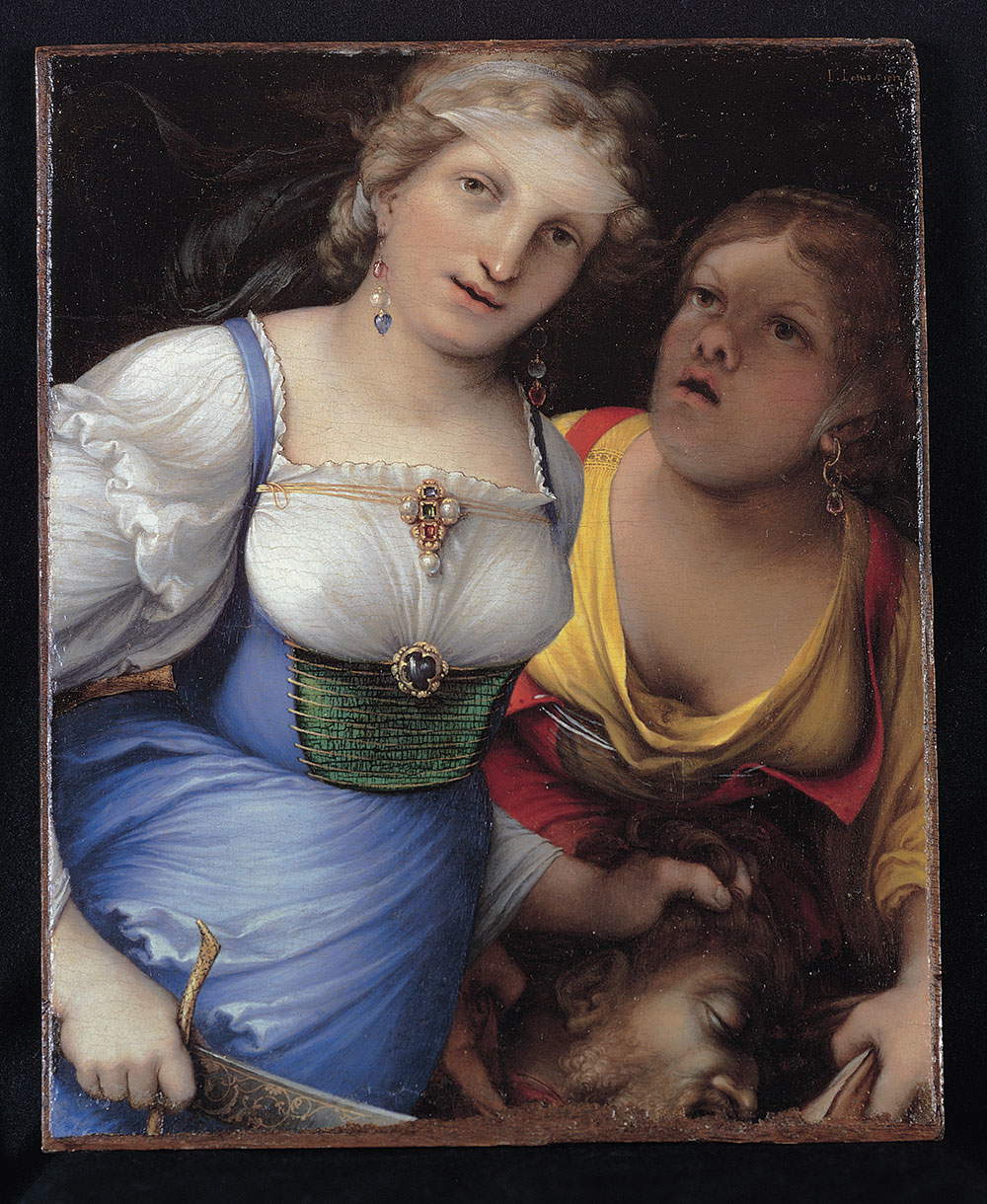 |
| Lorenzo Lotto, Judith with the Head of Holofernes (1512; oil on panel, 28.8 x 23.4 cm; Rome, BNL Gruppo BNP Paribas Collection) |
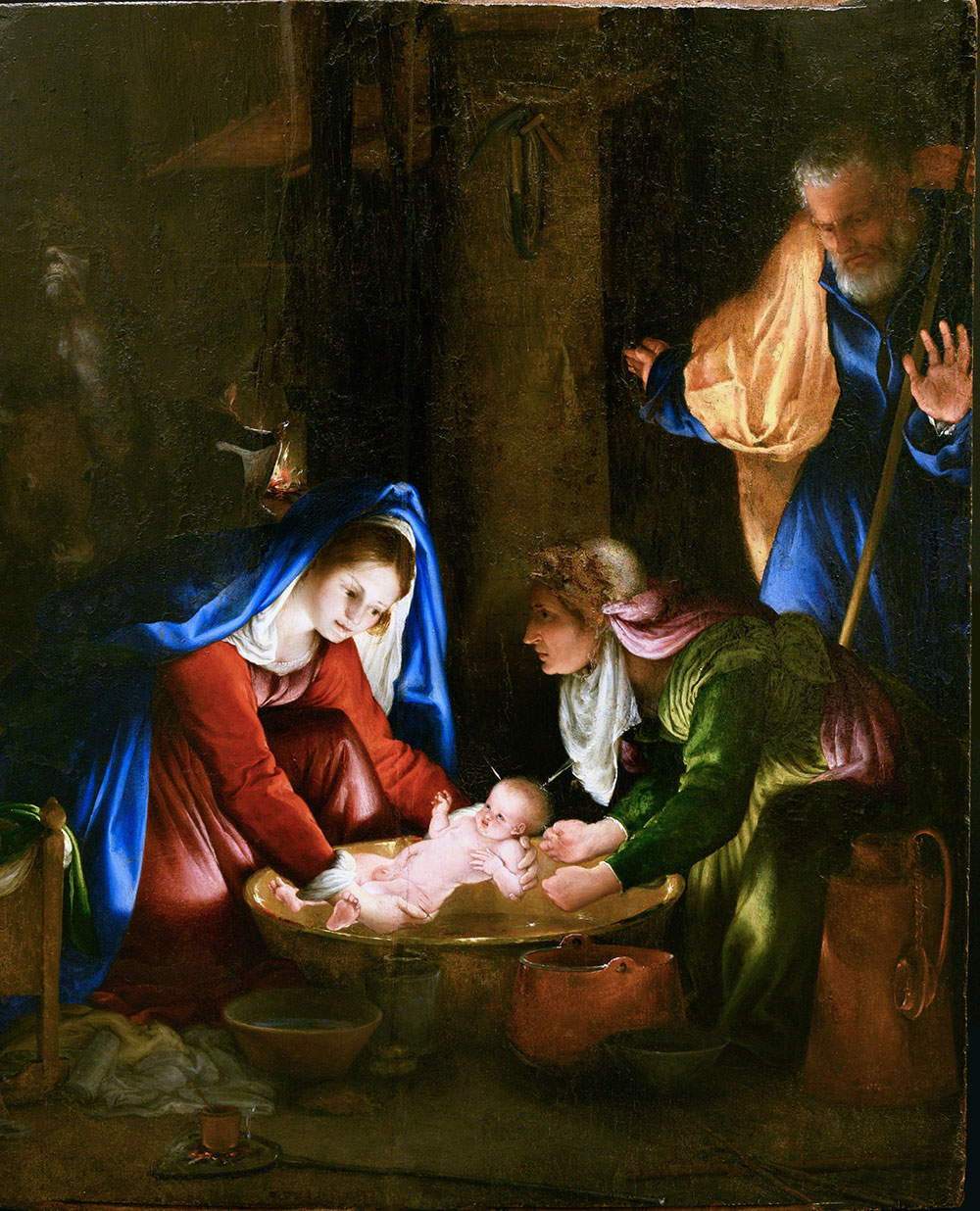 |
| Lorenzo Lotto, Nativity at Night (Madonna Washing the Child) (1526; oil on panel, 55.5 x 45 cm; Siena, Pinacoteca Nazionale di Siena) |
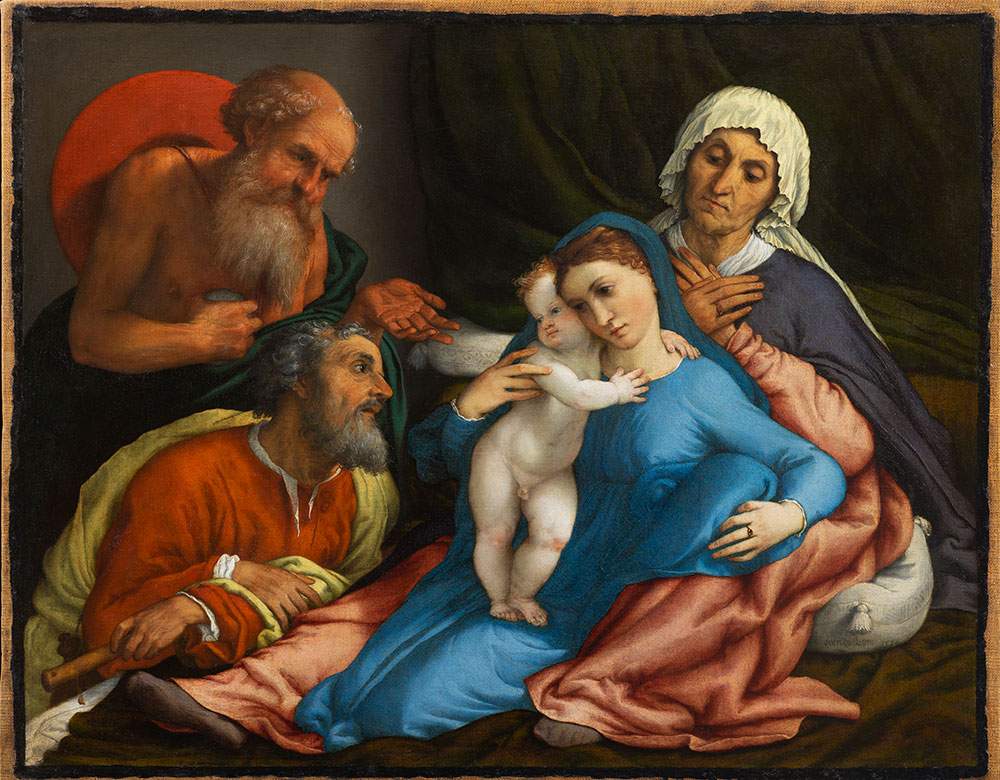 |
| Lorenzo Lotto, Holy Family with Saint Anne and Saint Jerome (1534; oil on canvas, 67.2 x 85 cm; Florence, Uffizi Galleries) |
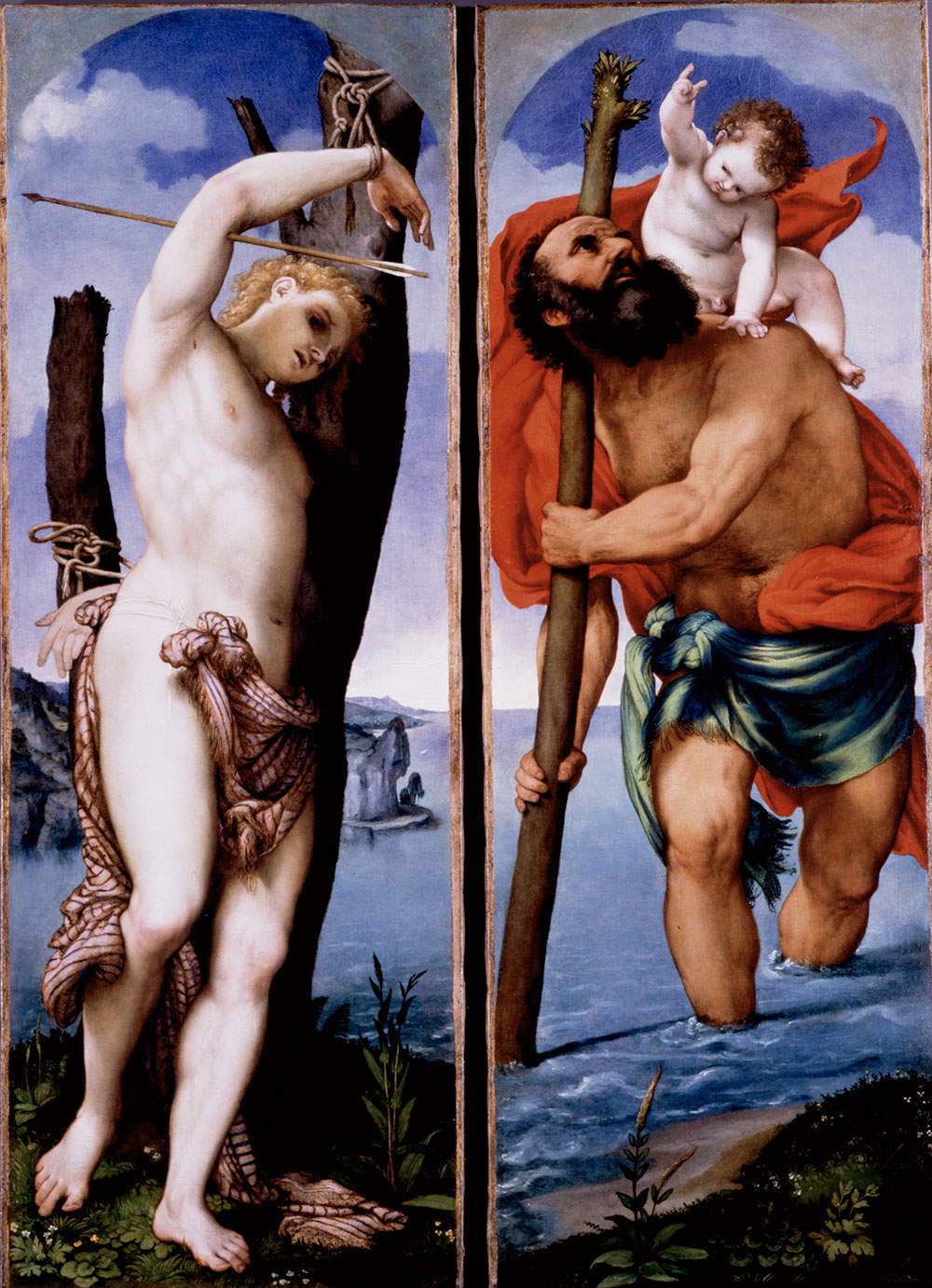 |
| Lorenzo Lotto, Saint Sebastian and Saint Christopher (both 1538-1539; oil on canvas, 162 x 56.8 cm; Berlin, Staatliche Museen on Berlin, Gemäldegalerie) |
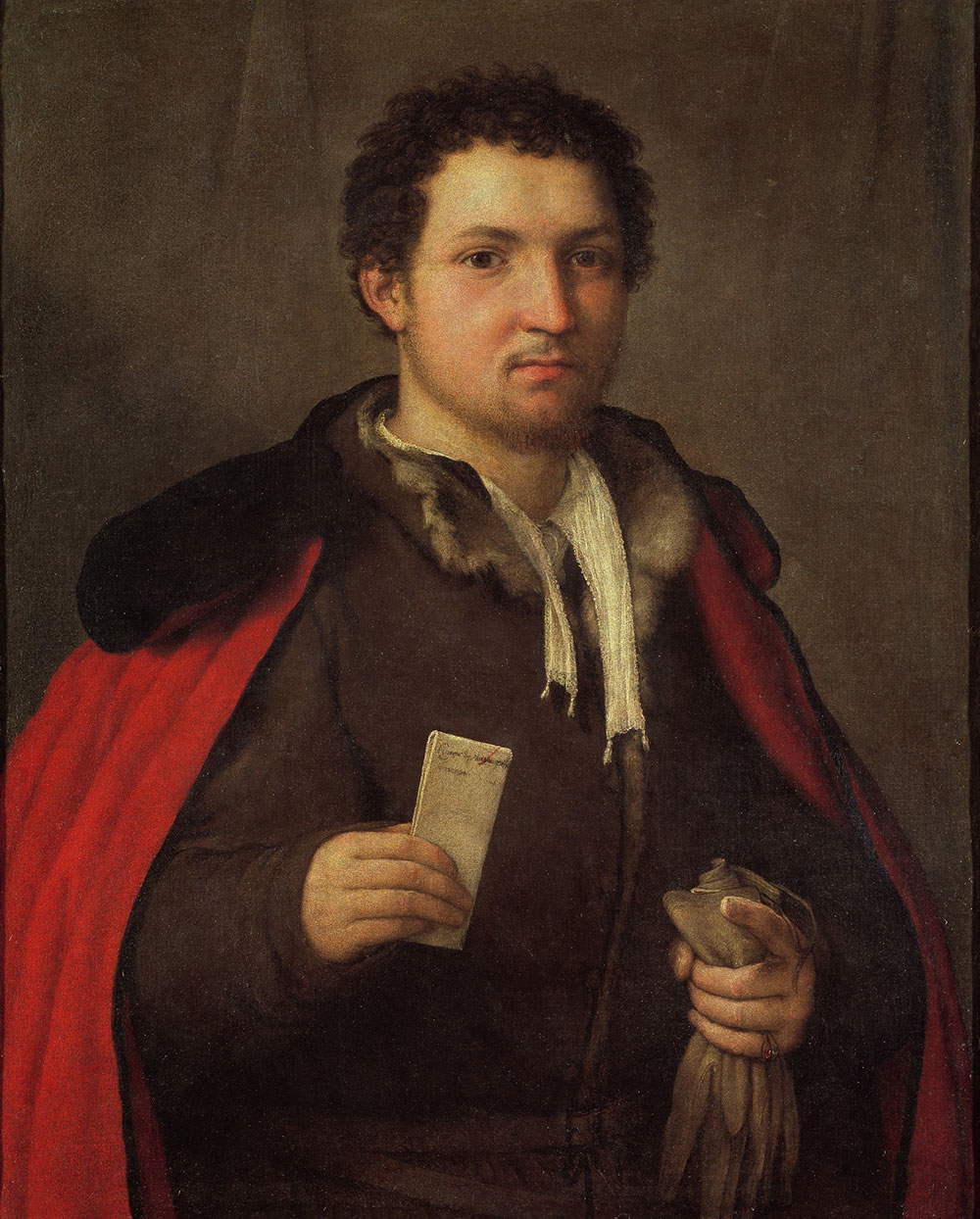 |
| Lorenzo Lotto, Portrait of a Gentleman with Gloves (c. 1540-1545; oil on canvas, 74.5 x 59.5 cm; Private Collection) |
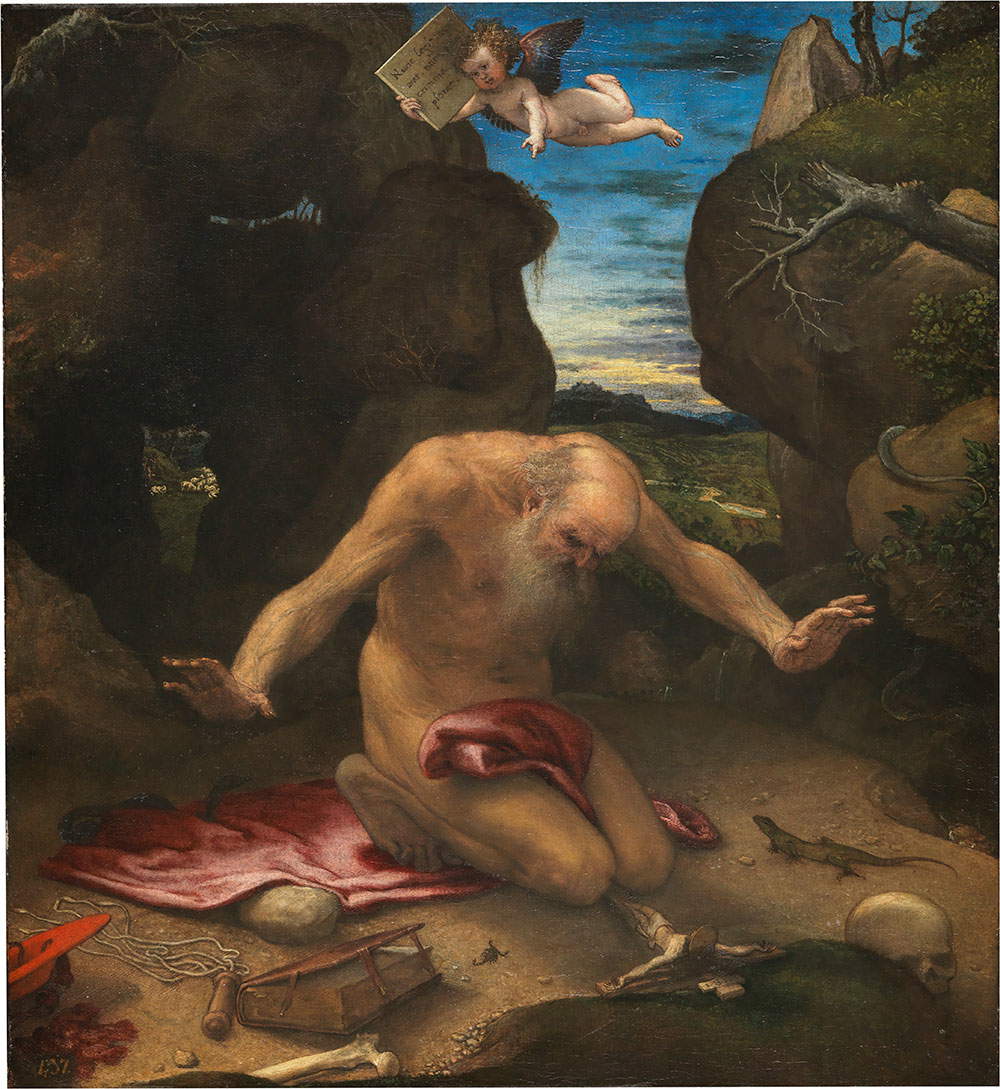 |
| Lorenzo Lotto, Penitent Saint Jerome (c. 1540-1546; oil on canvas, 99 x 90 cm; Madrid, Prado) |
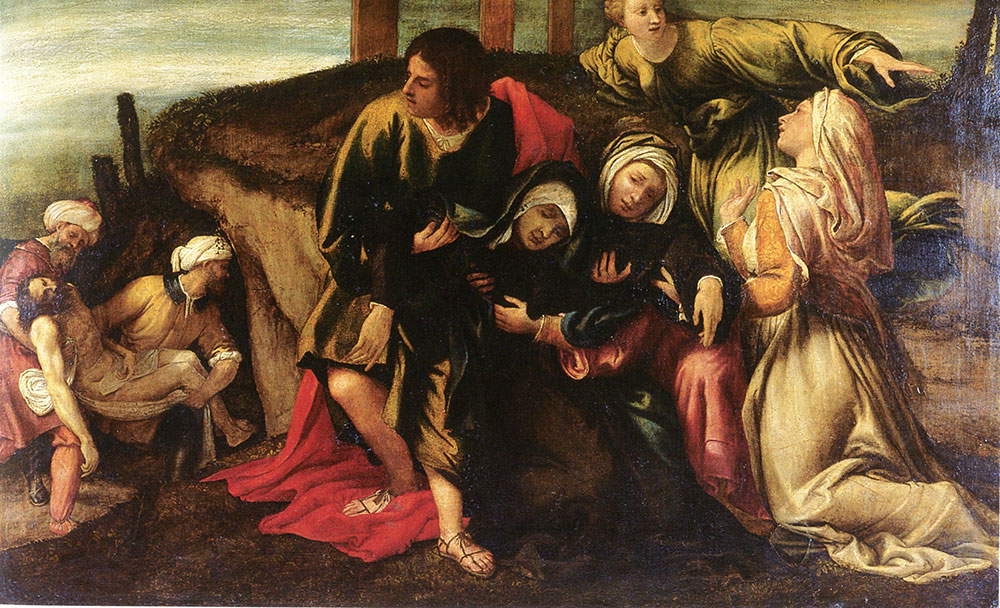 |
| Lorenzo Lotto, Fainting of the Virgin during the Transport of Christ to the Tomb (1541; oil on canvas, 142 x 212 cm; Strasbourg, Musée des Beaux-Arts) |
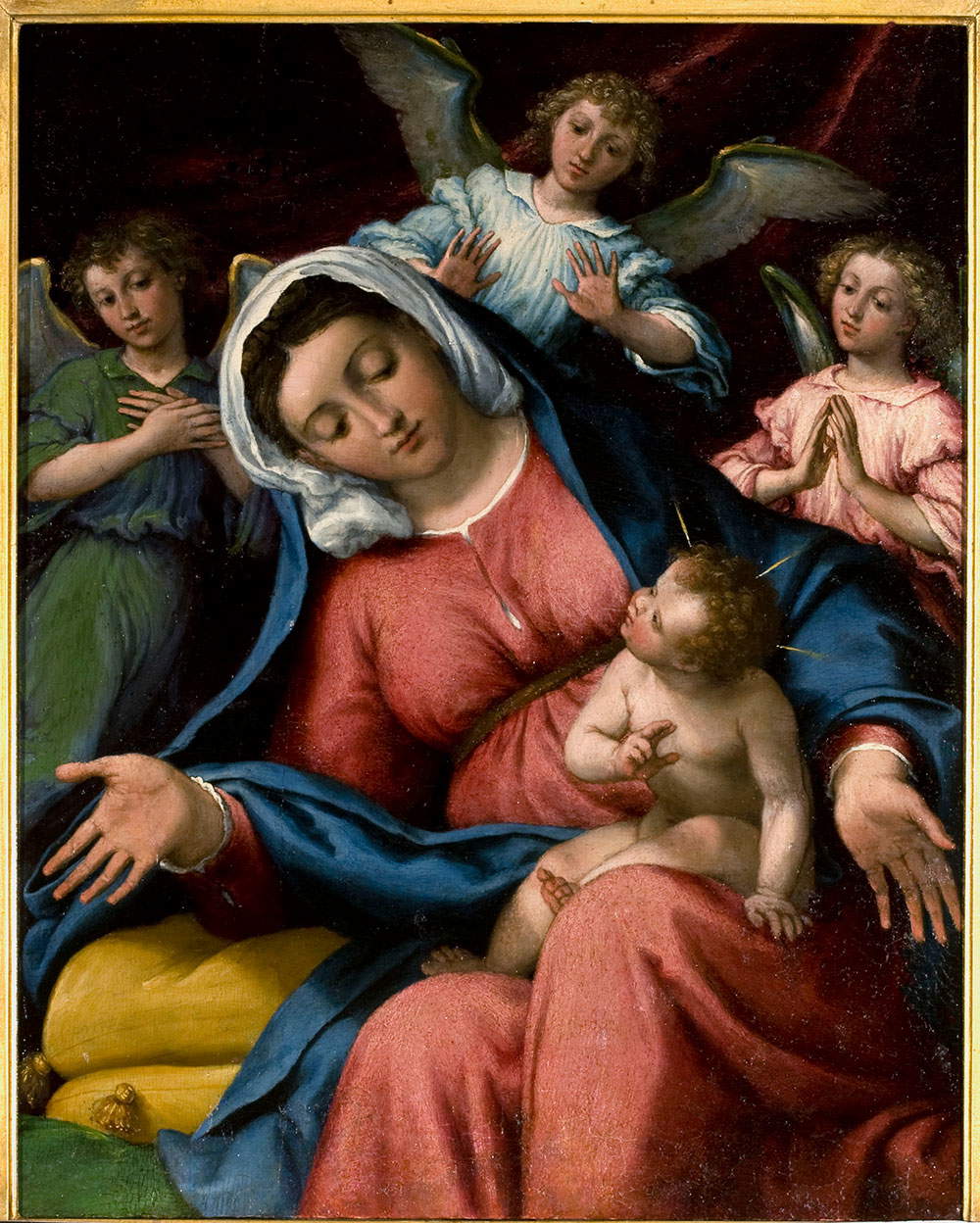 |
| Lorenzo Lotto, Madonna of Grace (c. 1542-46; panel, 39.5 x 32 cm; St. Petersburg, Hermitage) |
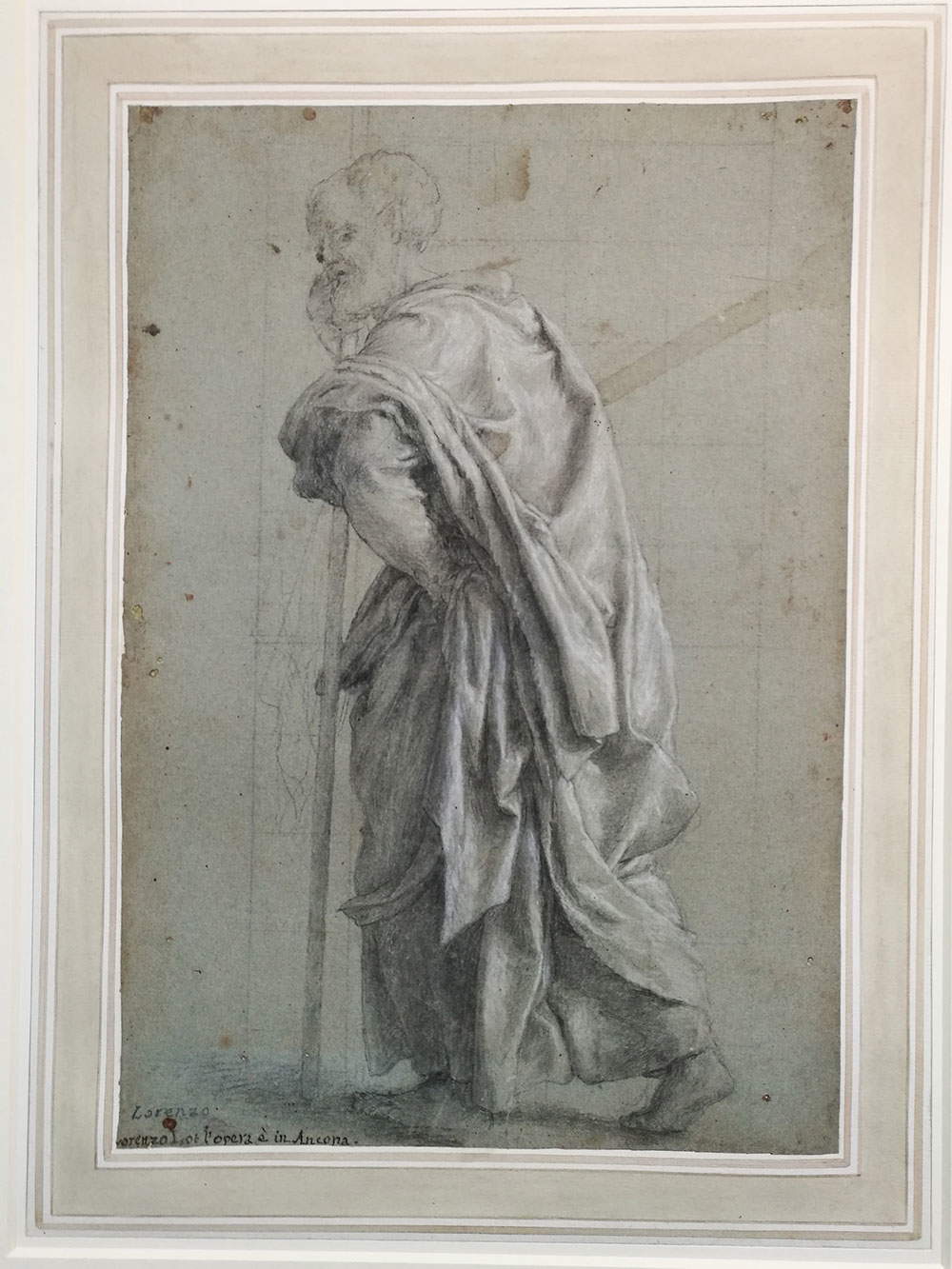 |
| Lorenzo Lotto, Study for the Saint Matthias (Saint Simon) of the Ancona altarpiece (1550; drawing, 40.6 x 28.1 cm; London, The British Museum) |
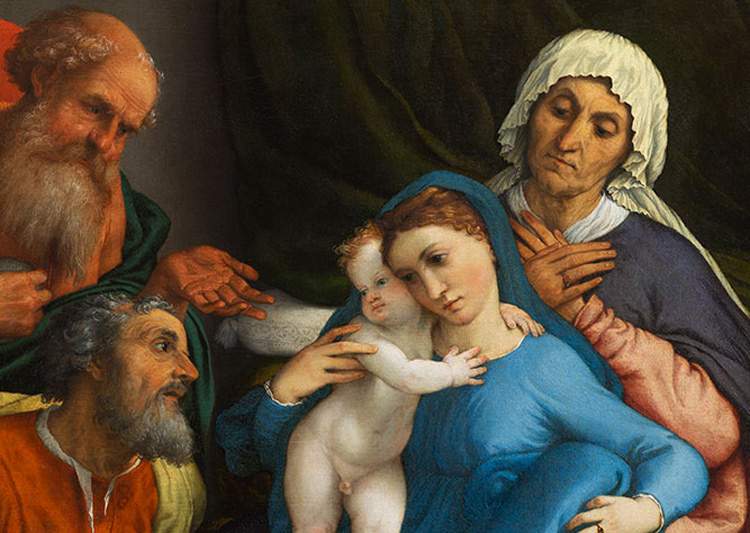 |
| Lorenzo Lotto, an exhibition in Macerata and the territory brings together his Marche production for the first time |
Warning: the translation into English of the original Italian article was created using automatic tools. We undertake to review all articles, but we do not guarantee the total absence of inaccuracies in the translation due to the program. You can find the original by clicking on the ITA button. If you find any mistake,please contact us.



























